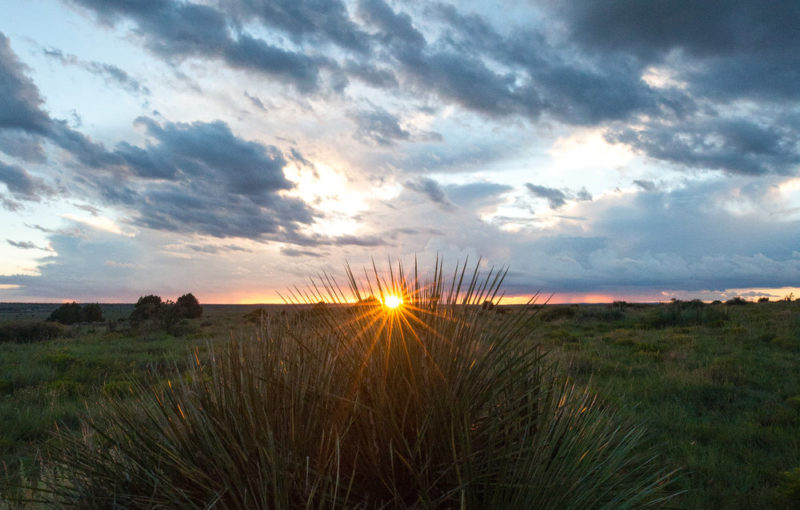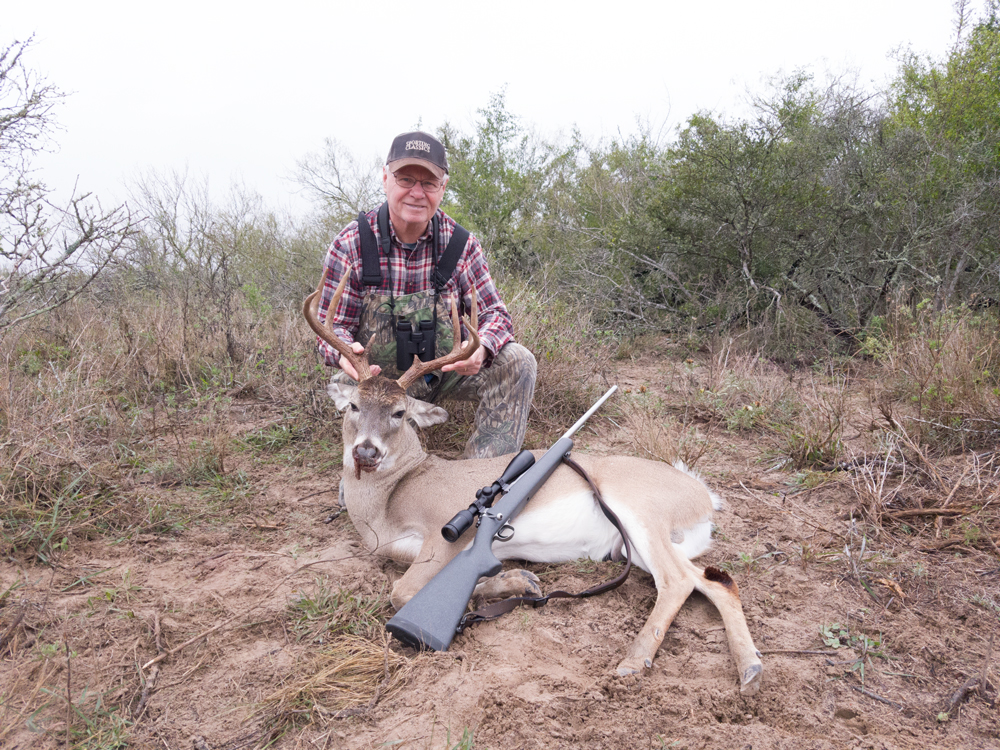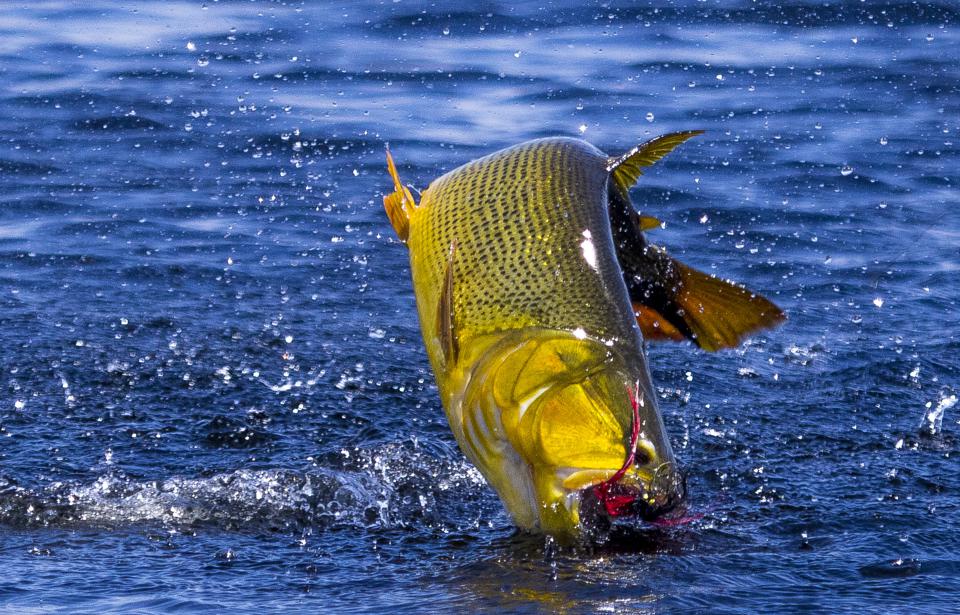On a mixed-bag Argentina big game hunt, the author experiences an entirely new continent and its game.
It was evident when I met Gaucho the houndsman that he either did not speak English or didn’t choose to around me. When I shook his hand after my hunting guide and I pulled into his cattle ranch while he was saddling his horse, “Gaucho” was the one word he said. I knew it wasn’t his real name. In South America, it is the word for cowboy. I thought it was a fine title for an Argentinian who raised cattle, rode a horse like he was born on it and had a pack of fearless hog hunting dogs.
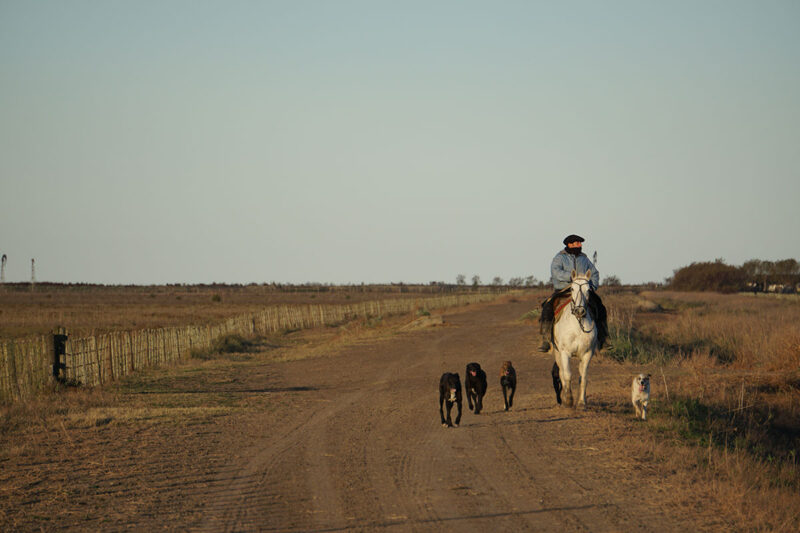
“Gaucho” was the one word he said…in South America, it is the word for cowboy.
He wore one of those flat scally caps that look silly on the vast majority of people who wear them, and hardcore on a very few select individuals. Galloping on his painted stallion with his pack of lithe, muscular hounds trotting behind him, he fit into the latter group.
Gaucho’s hounds were a ragtag group, but they all looked tough as nails — a perquisite for hog dogs everywhere. Most had the slim, tall frames and tiny ears of sight hounds, but one looked like it had some yellow Labrador in it. I learned long ago that most houndsmen are pragmatist rather than loyalist to certain pure breeds. Houndsmen breed dogs that catch game. Gaucho didn’t seem like the kind of guy who cared about a fancy pedigree certificate from some kennel club, if they even existed at all in Argentina.
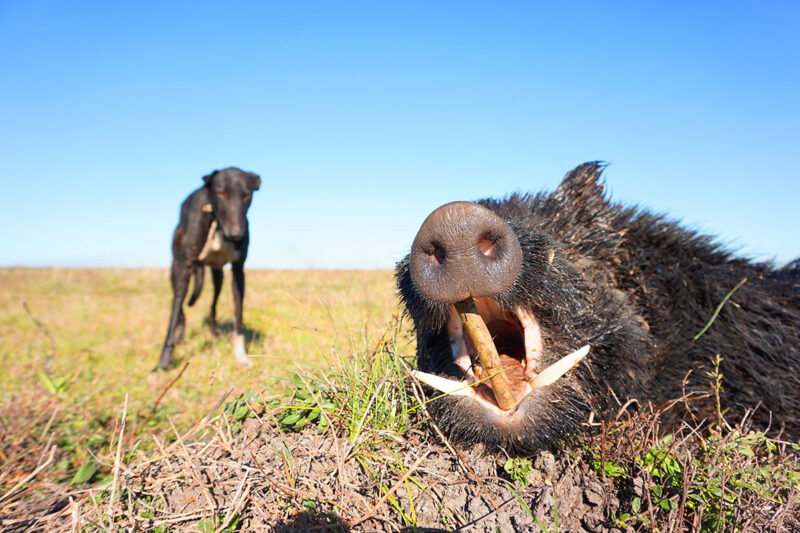
Gaucho’s hounds were a ragtag group, but they all looked tough as nails — a perquisite for hog dogs everywhere…Houndsmen breed dogs that catch game.
When we reached the area we were to hunt on Gaucho’s cattle ranch, he gave a command in Spanish, and the hounds began to cast in front to us, searching the parts of the pastureland with thicker cover for hogs. The hunt had begun.
For the hunter, traveling the world to experience wild places and pursue the game that inhabits those places creates a bug that quickly turns into obsession. There is no known cure for this affliction, and the only treatment for such a condition is periodically booking hunts and plane tickets to far-flung locations.
I do not know whether I use travel as an excuse to hunt or use hunting as an excuse to travel. The truth probably lies a little bit in both. My wife, God bless her, has come to terms that she married someone who is a vagabond at heart who has made a habit of short notice hunting trips to other continents. She is no longer surprised when I discuss the possibility of a hunt that will require me to “leave Wednesday,” or something like that, for another country.
In typical form, I made a last-minute booking with Caza y Safaris, an outfit that offers hunts in various places around Argentina. Having traveled a fair bit myself, a hunt in South America would be my sixth continent visited. Argentina is renowned for its bird hunting, but also boasts a variety of both native and introduced big game species. My hunt was to be in an area that offered a good variety of species to hunt.
One of the highlights of any trip is the people you meet at the destination and along the way. Things started interestingly on this trip as soon as my plane landed in Buenos Aires when I found myself in the customs and immigration line behind Danny Trejo. He has starred in his own movies but is usually cast in a supporting role as a bad guy. Until meeting him, no matter what movie I saw him in, I always pictured him as the guy throwing the knives at Antonio Banderas in “Desperado.” Thankfully, he was much nicer in person than the characters he plays on the big screen.
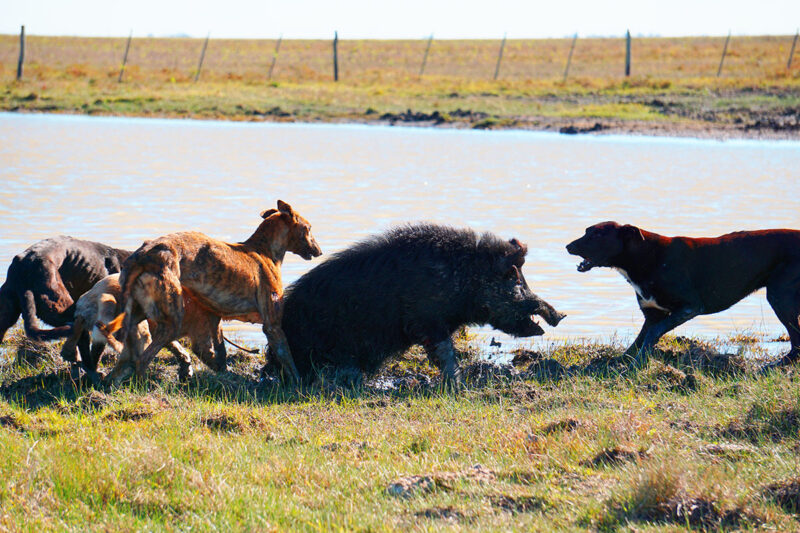
“Hog dogs live to fight.”
Leo, my hunting guide, and I walked alongside Gaucho and his horse as his dogs casted in front of us. I watched the hounds zigzagging ahead, loping through the grass at what I guessed was something like one-sixth of full speed. With their tucked up bellies and muscles glistening in the rising sun, the hounds were the epitome of potential energy. They were coiled springs, but they just needed something to chase.
When it finally happened, it was a spectacle to behold. A group of black pigs broke from a thicker section of tall grass and some prehistoric switch flipped deep in the brains of the hounds. They went from loping to full speed in about two steps and transformed into flashes of dark in grass homing in on the hogs like heat-seeking missiles and gaining fast. I stood there witnessing the chase with a stupid grin.
It ended as quickly as it started.
I heard Gaucho say a command while hardly raising his voice, and the dogs immediately broke off the chase and returned to him and his horse. The hounds did not even have e-collars on them. I was simultaneously amazed at the dogs’ speed and the fact that Gaucho called them off of the chase with one stern word. I looked over at Leo.
“Too small. Was just a sow and young” he said.
We kept hunting and Gaucho worked the dogs through various patches of thicker vegetation until we eventually bumped a lone boar from one of them. He took off through an open area with a lead on the hounds that began to diminish rapidly as they gave chase. The pig was fast but was no match in a foot race with the hounds closing the gap with perfect economy of motion. With few options, the large boar made it into a marshy area next to a stock pond and disappeared into the tall grass.
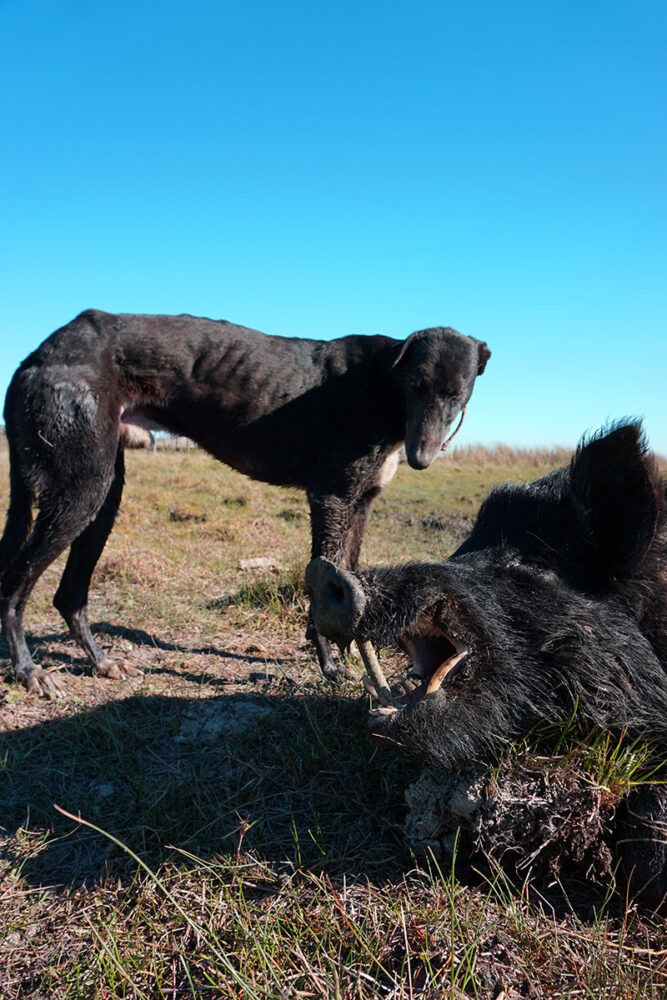
These dogs are supreme athletes, tough as nails and love what they are bred to do.
We made our way to the action, and I heard a couple of agitated grunts and the yipping of excited dogs. At the edge of the thick grass, we could not see any of the action. Instead, we heard the primordial noises of beasts fighting. The grass moved and flicked, but we saw nothing else.
Then the hog burst from the cover with the pack of hounds on his heels, one actually attached to the hog’s backside. The boar whipped around and the dog that had his teeth in him was thrown clear of the melee. The same dog immediately reentered the fray, teeth barred and barking. Then the boar backed up to a small stock pond to make his stand.
The pig was built like a tank — tough, thick-skinned, stocky and, though outnumbered, didn’t cower but stood tall and fought hard instead. The white tusks that curled out of his mouth stood in contrast to the black of the rest of his face. They were his weapons of war and, combined with speed and incredible strength, used them well. One of Gaucho’s dogs, a tan mutt heavy with Labrador blood, got too close and the pig lunged at his face. It happened too quickly to comprehend, but when the blur of movement was over, the dog’s face had been ripped open along his muzzle leaving a deep, bloody gash that ran from his nose to just below his right eye. Wild boars are bad to the bone, so the dogs need to be just as tough to be effective. The dog kept fighting unfazed.
Hog dogs live to fight.
As a houndsman myself, I knew pursuit hounds were the least far removed from wolves in the domestication process of all hunting dogs, and I knew Gaucho’s hounds were doing exactly what they wanted to be doing. Simply put, some dogs need more than a frisbee or tennis ball to chase to be content.
I eased toward the fight, rifle in hand and looking for an opening, knowing this was the most dangerous part of the hunt for the dogs. Gaucho gave a stern command to his pack and immediately the dogs abandoned the hog and returned to their master on his horse. I shot the boar as soon as the dogs were out of the way. As in all hound hunting, the shot was anti-climactic. Witnessing the dogs work always reigns supreme to the shot.
In what appeared to be a last act of defiance after the shot, the hog ran into the pond and died with nothing more than a leg out of the water. It wasn’t the worst problem to have, but I figured I’d be getting wet to go and retrieve the boar. Before I knew it, however, Gaucho, true to his name, whipped out his rope and lassoed the thing’s leg before towing it from the water with his horse.
The hog was ugly and smelly, like all trophy boars, and I knew I would later gaze upon his tusks with reverence in my home, for both him and the hounds who caught him.
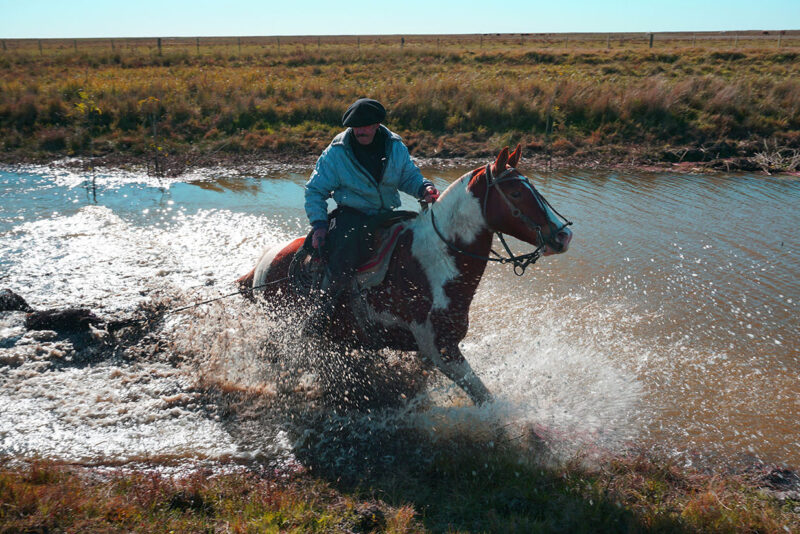
Gaucho pulls the author’s boar from the pond it ran into after being shot.
Before Leo and I left to head back to camp, Leo told Gaucho in Spanish that I was a houndsman, and I showed a few pictures of my own hounds to Gaucho. When I shook his hand, I told him how great his dogs were. He clearly understood more English than he was willing to speak, because he gave me a grin full of pride and a nod, houndsman to houndsman, just before we departed.
The rest of the hunting took place directly from the lodge instead of Gaucho’s ranch. Leo and I would leave camp on foot. The property had a huge expanse of wetland area surrounded by a mix of open forests and green fields. I enjoyed the process of hiking around, attempting stalks and sizing up males of the species we were after.
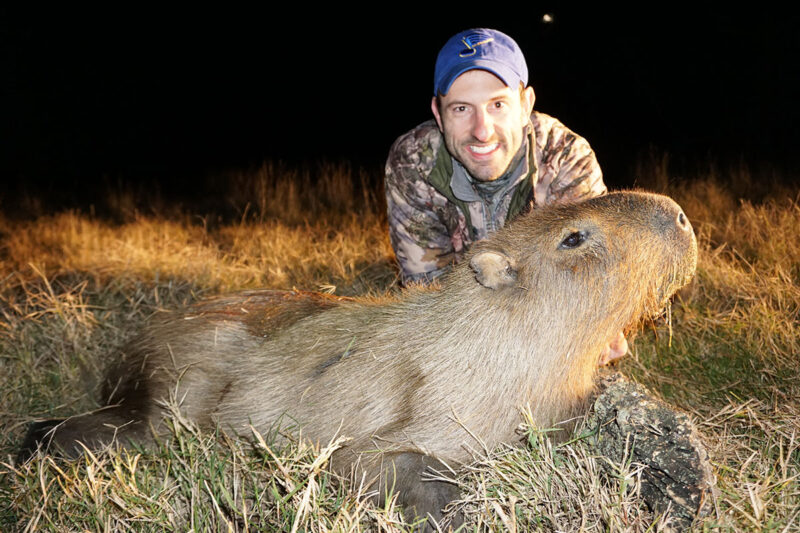
Muckerman with the weirdest animal he has ever seen or hunted, the capybara, a rodent as large as a deer.
On our first hike, we crested a small rise and I saw a couple brown animals against the green grass and put my binoculars up. They were a type of rodent, and a capybara was my most desired game animal on the trip. But these did not look that big to me and it was disappointing to say the least.
Then Leo said, “Those are coypu. You call them nutria. There are some capybara to the left of them a hundred meters.”
I scanned my binoculars left and stopped on the next group of brown critters that were much larger than the coypu.
“That’s more like it,” I said. “Those are huge.”
Leo laughed quietly.
“Those are babies,” he said.
Then I felt Leo’s hand on the top of my binoculars, shifting them a little farther left. What I saw startled me — rodents as big as deer! I may have said an expletive or two in shock of the freaks of nature that appeared through my binoculars. They were anomalies of creation, like some sort of lab experiment that had gone haywire in which the creatures had escaped and propagated.
It was a herd of capybara, which was an odd way to think of a group of rodents, but considering they are the world’s largest rodent and can weigh between 100 and 200 pounds, it seemed to fit. They were near the edge of the water and reeds, some standing, but most bedded, taking in the winter sun.
Before my trip, my wife had joked that I was flying 12 hours in a plane to hunt a 100-pound hamster, but the adventurer inside of me preferred to think of them more like the ferocious R.O.U.S. (Rodents of Unusual Size) from the “Princess Bride” movie. I have always been intrigued by the weird and obscure when it comes to game animals. One look at that herd of rodents and the capybara jumped right to the top my list of the weirdest animals I have ever seen.
Leo explained that the males had a strip of black on their nose that was some sort of gland. I noticed one in the group.
“He is just decent. You can take him, but we can find a bigger one if you want to go out at night.” I wanted to shoot the male just out of curiosity of seeing the thing up close, but I have learned in these situations that it is best to trust the professional guide. Plus, I admittedly liked the idea of a night hunt because there are not many opportunities to do that in a legal manner in my home hunting grounds.
We moved on from the herd with a plan to hunt the rodents at night later in the hunt. We spent the next few excursions trying to close the gap on the herds of blackbuck antelope.
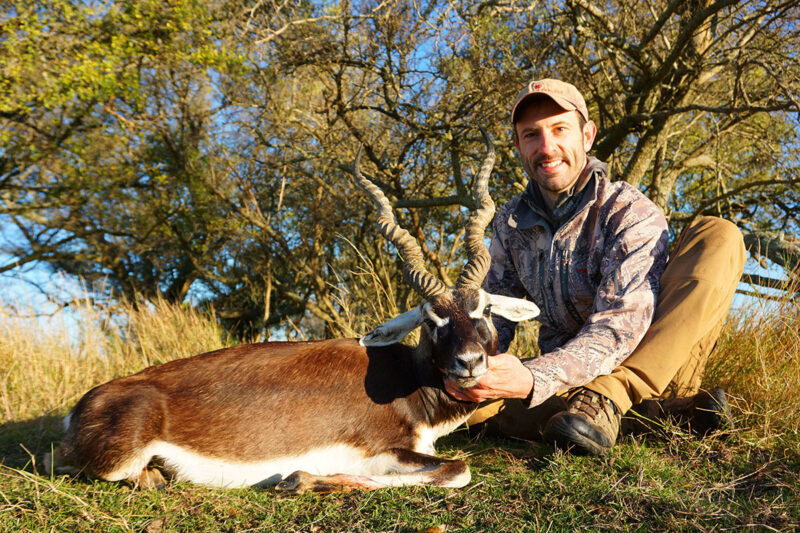
Muckerman rats male blackbucks as one of the most beautiful big game animals on earth.
Blackbuck are easily one of the prettiest animals in all of creation. Black and white, with a painted face and stunning corkscrew horns, the males possess a regal beauty that few other animals come close to. Originally from India, they are transplants to Argentina. They are spooky animals, and seemed to be turned on all the time, not unlike pronghorn in North America.
Just like pronghorn, hunting them was pure fun, and characterized by many failed stalks. The herds always seemed to know to stay somewhere between just out of rifle range and the far horizon, but over time Leo and I were able to close the distance and get one down.
With the blackbuck down, we switched gears and guns and hiked to an area we had not hunted. Now armed with a 375 H&H, we began the search for a water buffalo bull. When we eventually spotted an ominous black mass in the distance that appeared to be as big as a Volkswagen bus, we got the wind right and made a purposeful stalk.
What South American water buffalo lack in horn size, they make up in physical stature. They are significantly larger than their famous African cousins, and an imposing animal to hunt. When I faced the bull I killed, it seemed as if his major muscles had grown muscles themselves, and that his skin was holding on for dear life just to keep from ripping open from the pressure beneath. He was definitely the type of animal that hunters should put an extra bullet through once they’re down, just in case.
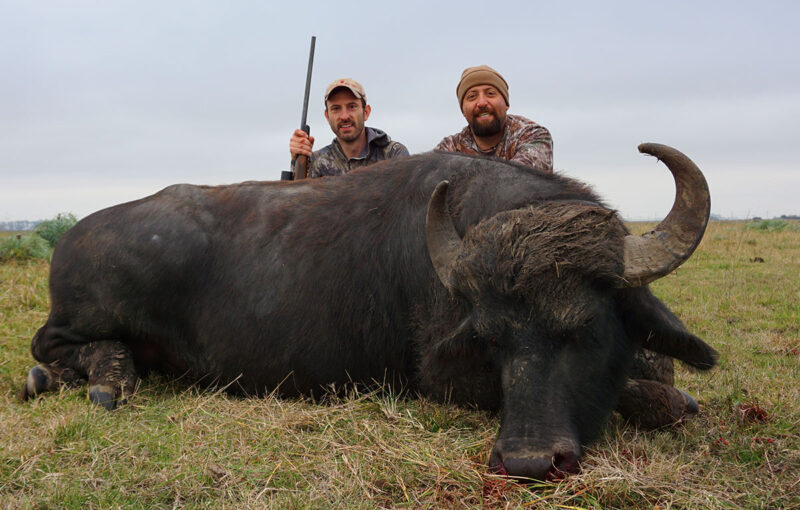
Muckerman had not planned to hunt water buffalo on his trip, but after seeing some around the property decided to pursue an old bull.
On the last night of the hunt, we left camp in the darkness in Leo’s truck in search of a big capybara. I normally do not hunt from a vehicle, and definitely not at night with a spotlight, but part of international hunting is trying new things, and I have no problem doing so as long as what I do is within the local law.
We didn’t have to go far to find our first herd of capybara, or our second or third, for that matter, and it was evident why Leo had not worried about me being able to find a mature male in a single night out. The creatures were all over the place, like some sort of nocturnal invasion from the swamp.
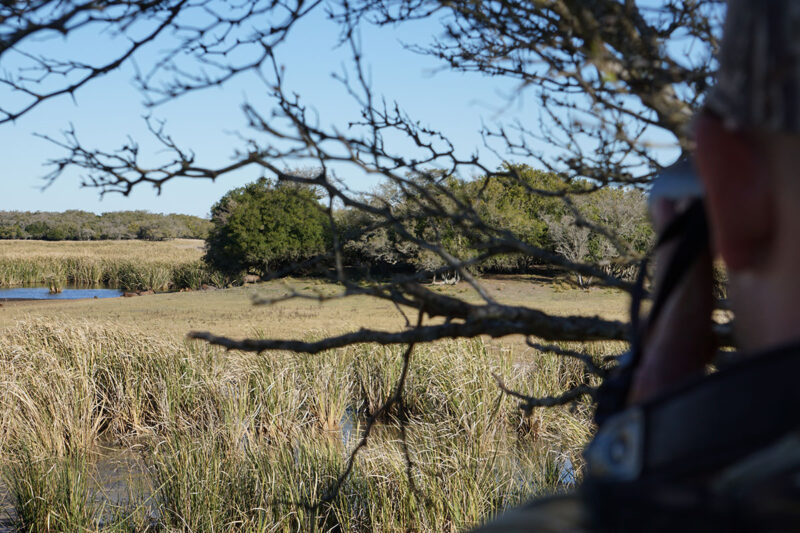
The author’s guide, Leo, glasses a herd of capybara looking for a large male. The author decided to pass for the opportunity to hunt for a larger male at night.
It seemed that every time the truck turned there was a new group of glowing eyes. We would stop and Leo would look through his binoculars, and then keep going. Half of the things looked big enough to saddle up and ride, so I was not sure what we were waiting for until we found the one I ended up killing. We wrapped the truck around a large stand of reeds and saw a herd, and I immediately picked out a male that dwarfed the others in the group.
“He’s the one. Go ahead and get out and take him before he gets into the reeds.”
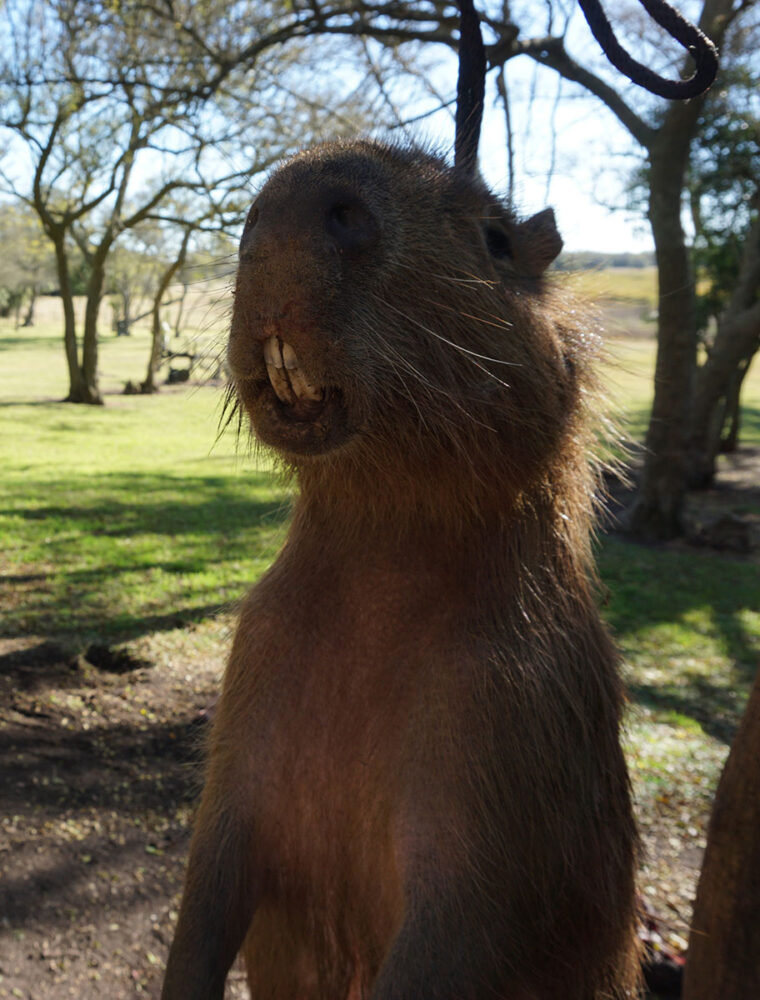 I did as I was told, jumped out, and was able to get a shot off just as the herd figured out it was time to scram into the safety of the swamp. The hunting phenomenon of ground shrinkage was not a problem on my capybara.
I did as I was told, jumped out, and was able to get a shot off just as the herd figured out it was time to scram into the safety of the swamp. The hunting phenomenon of ground shrinkage was not a problem on my capybara.
I do not know at exactly what point a rodent goes from being cute to just plain weird, but that thing had passed that threshold about 100 pounds ago. It was a fine way to end the hunt, but one of the benefits of hunting foreign places is that the adventure is not merely contained in just the hunting portion of the trip.
I had planned for a day in Buenos Aires, as I had heard positive things about “B.A.” as a city. Having spent a good part of my life backpacking and traveling through more than 45 countries, I generally do not enjoy time in big cities, but I gave B.A. a chance to surprise me.
My day wandering around Buenos Aires was not as exciting as hunting 100-pound rodents, stalking a water buffalo, or watching a well-trained pack of hog dogs risk their lives to do what they love. But admittedly, as far as cities go, I loved the pulse. I spent a day getting lost on its cobblestone streets and discovering delicious eateries and interesting history. Mostly, I just enjoyed the anonymity and freedom of being in a crowded city a million miles from home with no itinerary other than to explore the unknown.
Nick Muckerman has had features published in Sports Afield, DSC Game Trails, Sporting Classics Magazine, Huntin’ Fool, Earned DIY Journal and Outdoor Guide Magazine. He was a finalist for DSC’s 2016 Dave Baxter Literary Award.
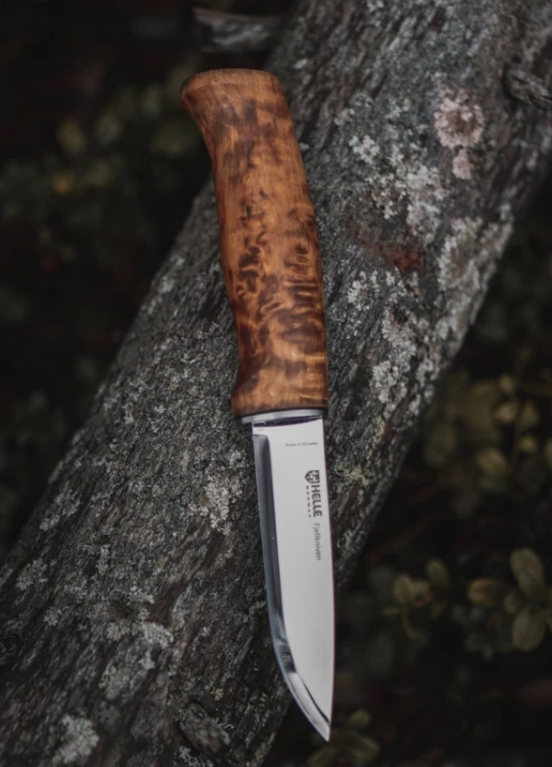 The Fjellkniven is a traditional all-purpose belt knife. This highly polished laminated stainless steel blade is shaped for every day chores. The comfortable grip is shaped to keep your hands off the blade. It comes with the traditional pouch style sheath that does not require a keeper strap. Buy Now
The Fjellkniven is a traditional all-purpose belt knife. This highly polished laminated stainless steel blade is shaped for every day chores. The comfortable grip is shaped to keep your hands off the blade. It comes with the traditional pouch style sheath that does not require a keeper strap. Buy Now


